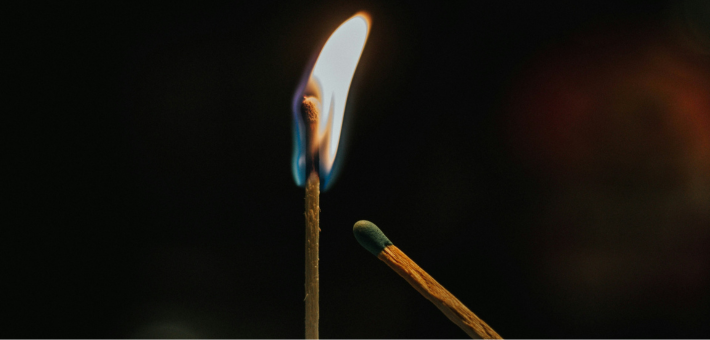Commentary on Isaiah 52:7-10
Isaiah 52:7–10 marks the climax of Isaiah 40–55 (frequently designated “Second Isaiah”). Decades after Babylon invaded Judah in 587 BCE, the poet-prophet offers comfort to exiled Judeans and personified Jerusalem, who believe God has abandoned them (Isaiah 40:27; 49:14). Anticipation for divine action reaches a fever pitch in these verses.
This text demonstrates the promise and peril of hopeful preaching. On the verge of losing faith, disillusioned audiences desperately need reassurance, but there’s a danger of creating unrealistic expectations that only compound hopelessness. The other Old Testament reading for Christmas Day, Isaiah 62:2–12 (see Nativity, Proper II), makes similar promises with nearly identical language to 52:7–10. Likely written a century later, it responds to disappointment over the limited fulfillment of Isaiah 52’s grand pronouncements.
Christian hope is always “already but not yet.” J. J. M. Roberts helpfully compares prophecy to a parent’s encouraging response of “Almost!” to a child’s persistent question of “Are we there yet?”1 That tension is built into this juncture of the church calendar. Advent and Christmas, respectively, anticipate Christ’s future coming and celebrate Christ’s past coming. In the long in-between time, we live paradoxically with urgency and patience.
Although much more could be said about these verses, I focus here on three poetic images: beautiful feet (verse 7), singing walls (verse 9), and God’s bared arm (verse 10).
Beautiful feet
Verse 7 opens unexpectedly: “How beautiful … are the feet …” We don’t usually think of feet as attractive. They’re smelly and sweaty. Signs reading “No shirt, no shoes, no service” suggest they’re something to cover up. What makes feet, of all things, “beautiful”?
These feet, it turns out, belong to a “messenger.” They’re an example of metonymy, a poetic device in which part of something stands in for the whole. By focusing on their feet, the poem emphasizes the messenger’s movement. They have traveled a great distance, even traversed mountains. Their beauty comes from their message, which the poem unfolds over four lines:
who announces peace,
who brings good news,
who announces salvation,
who says to Zion, “Your God reigns.” (verse 7)
Imagine a world so bereft of hope that even the feet of someone bringing good news seem beautiful! Many of us don’t have to imagine such a world this Christmas. We find ourselves living in it.
In addition to movement, feet also connote purposeful intention. In contrast to the beautiful feet of heralds of the gospel, Proverbs 6:18 lists “feet that hurry to run to evil” as something God hates. Which description fits our feet? In a despairing and polarized society, do we rush to spread dissension or to offer hope? Are our feet beautiful?
Singing walls
From their position atop the city’s fortifications, the sentinels of Jerusalem witness the messenger’s approach (verse 8). Unexpectedly, they don’t sound an alarm. They break out in joyful song! They recognize what the messenger’s arrival portends: “the return of the LORD to Zion” (Isaiah 52:8). From the perspective of at least some biblical writers, God had abandoned Jerusalem before its conquest (compare Ezekiel 10). Now, like a victorious ruler, the deity has returned.
Despite the vividness of the imagery, both the messenger and the sentinels are imaginary. Isaiah 52:9 brings us back to reality. The city had been reduced to rubble by the Babylonians decades earlier, and its walls wouldn’t be rebuilt for another century, as described in Nehemiah. There’s nothing for sentinels to guard, no one to deliver a message to. Even as the text acknowledges this reality, however, it imaginatively transforms it. The poet-prophet bids “you ruins of Jerusalem” to join the sentinels in loud, joyful song. By poetically bringing Jerusalem’s rubble to life, the text initiates the process of its restoration.
Across the world today, in places like Gaza and Lebanon, Sudan, and Ukraine, cities are reduced to rubble by bombs and artillery. We must acknowledge the horror of such destruction and the trauma of its survivors. We must do everything in our power to bring the violence to an end. But can we also imagine those ruins singing on this Christmas Day?
We can only believe what we can imagine. By using the power of poetry to conjure a better future, the poet-prophet of Isaiah 40–55 makes it possible for the audience to hope again.
A bared arm
The final image of the reading is God’s “bared … holy arm.” Throughout the Hebrew Bible, the divine arm represents God’s power to deliver. It’s closely associated with the exodus, the paradigmatic demonstration of divine power (for example, Exodus 6:6; Deuteronomy 5:15; Psalm 136:12; et cetera).
In the previous chapter, the poet shared a desperate plea for the “arm of the LORD” to “awake, awake, put on strength” (Isaiah 51:9). The prayer implicitly accuses God of falling asleep on the job, a recurring motif in biblical laments (Psalms 7:6; 35:23; 44:23–24). God once delivered God’s people and defeated their enemies with a mighty display of power. Why can’t God do so again? It isn’t difficult to identify with this longing for divine vindication.
Isaiah 52:10 reports the answer to this prayer. The divine arm is “bared” and poised for action, in grand fashion no less—“before the eyes of all the nations.” One almost imagines an enormous, flexed bicep on display in the heavens. Surely something amazing is about to happen!
And that’s where the text leaves us. The divine arm is poised and ready, but we don’t know what it will do. Our salvation is at hand, but we don’t know what it will look like. We are called to trust that God will bring justice to our broken world, but we must remain open to being surprised by how God will accomplish this mighty act.
Who knows? It just might involve a vulnerable infant born to impoverished refugees in an oppressed nation.
Notes
- J. J. M. Roberts, “A Christian Perspective on Prophetic Prediction,” Interpretation 33 (1979): 249–250.


December 25, 2024